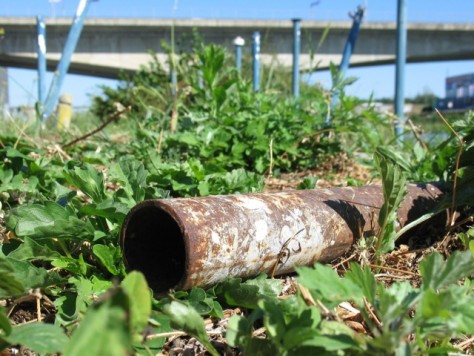[ezcol_1half]
as part of playaround 2012
The technology required for exploration of our sonic environment (digital sound recorders, microphones, editing software) is now readily available and affordable, but the most important and powerful tool we have is often overlooked: our ears. In this workshop we will return to this most basic hardware and explore perception via listening itself, in a detailed consideration of our surroundings via sound. Although we will of course make use of the technology available to us, our focus will be on the act of listening itself in an attempt to gain a greater understanding of what is arguably our most important sense.
We will explore both active and passive soundscapes: passive through the act of field recording, as we explore the obvious and hidden sounds of small spaces in an exercise called ‘one square meter’, in which participants will find and document different sounds, resonances and perspectives from within a defined radius, and active through improvisational sonic explorations as we create unamplified group performances in found spaces using only the materials found therein. In this way we will give voice to spaces whose resonances may otherwise remain silent.[/ezcol_1half][ezcol_1half_end] [/ezcol_1half_end][ezcol_4fifth]Further description of some of our activities:
[/ezcol_1half_end][ezcol_4fifth]Further description of some of our activities:
– durational listening: One of out first exercises will be to explore our own perception of sound through an extended session of listening to field recordings and found sound. We will explore and discuss perceptions of time and space and how they are affected by sound, notions of self-awareness, sensitivity to certain types/qualities of sound, and identification vs. anonymity of sound.
– one square meter: Participants will choose a small defined space, natural or urban, and explore it’s sonic aspects in detail through various recording techniques (normal microphones, contact microphones, hydrophones, miniature microphones inside objects, etc), making an extended sonic survey of a small space. For an example see this Maribor, Slovenia location on the aporee soundmaps.
– active/passive blind soundwalks: Participants will lead and be led through various environments with eyes closed, both through the existing soundscape of our natural environment, and through our own created soundscapes which we will construct through our acoustic improvisations and explorations. In this way we explore the intensity and detail of listening to an environment without seeing it.
– revenant actions: for the ‘active’ portion of our workshop, we will choose locations and explore them sonically through intervention/interaction with the space. All spaces have resonance and materials, and we will examine what sounds we can eek out of a space using only the material found there and a collection of ‘resonant aids’, such as instrument bows, rubber mallets and sticks, etc. Tones from rubbed windows, bowed metal, percussive hollow objects, textures from dried leaves – these are just a few examples of what can be found in a chosen space. For more information on the revenant project, see http://www.revenantsound.net
In the end we will have a collection of field recordings and site specific performances that will be a document of our explorations.[/ezcol_4fifth]